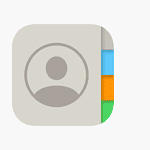Python is a popular programming language that is easy to learn and use. Created by Guido van Rossum in 1991, Python allows individuals to write code for a variety of tasks, ranging from building websites to performing complex calculations with large data sets. Its simple design and clear syntax make it a top choice for both beginners and experienced coders alike.
Python is versatile and can run on many types of computers, enabling it to efficiently handle small jobs or manage large projects with numerous components. The language has a large community of enthusiasts who share tools and provide support to one another, which helps it evolve and remain relevant as technology advances.
The Complete Guide to Python for Beginners
Python is one of the most beginner-friendly and versatile programming languages in the world. It powers everything from web applications and data analysis to artificial intelligence and automation. Whether you’re completely new to programming or just new to Python, this guide will walk you through everything you need to get started with confidence.
What is Python?
Python is a high-level, interpreted programming language known for its readability and simplicity. Created by Guido van Rossum and first released in 1991, it emphasizes clear syntax and code that’s easy to write and understand. Python is open-source and runs on all major operating systems including Windows, macOS, and Linux.
Why Learn Python?
- Beginner-friendly syntax: Python reads like English, making it easier to understand and debug.
- Versatility: Used in web development, data science, automation, AI, machine learning, game development, and more.
- Massive community: A large ecosystem of libraries and frameworks, and a helpful user community.
- In-demand skill: Python developers are sought after across industries.
How to Install Python
Step 1: Download Python
- Visit python.org and download the latest version for your OS.
Step 2: Install It
- Run the installer and make sure to check the box that says “Add Python to PATH” before clicking Install.
Step 3: Verify Installation
- Open a terminal or command prompt and type:
python --versionorpython3 --version
Writing Your First Python Program
Open your terminal and launch Python by typing:
python
Then type:
print("Hello, world!")
You should see:
Hello, world!
You just wrote and ran your first Python program.
Python Basics
1. Variables and Data Types
name = "Alice"
age = 30
height = 5.5
is_active = True
Python has dynamic typing, so you don’t need to declare variable types explicitly.
2. Basic Data Types
int: integers like 1, 100, -5float: decimal numbers like 3.14, 2.0str: strings of textbool:TrueorFalse
3. Control Flow
if age > 18:
print("Adult")
else:
print("Minor")
4. Loops
for i in range(5):
print(i)
i = 0
while i < 5:
print(i)
i += 1
5. Functions
def greet(name):
return f"Hello, {name}"
print(greet("Bob"))
Python Collections
Lists
fruits = ["apple", "banana", "cherry"]
fruits.append("orange")
print(fruits[0])
Tuples
coordinates = (10, 20)
Dictionaries
person = {"name": "Alice", "age": 25}
print(person["name"])
Sets
unique_numbers = {1, 2, 3, 3}
print(unique_numbers) # Output: {1, 2, 3}
Working with Libraries
Python has a huge ecosystem of libraries. You can install them with pip:
pip install requests
Example:
import requests
response = requests.get("https://api.github.com")
print(response.status_code)
File Handling
# Writing to a file
with open("example.txt", "w") as file:
file.write("Hello, file!")
# Reading from a file
with open("example.txt", "r") as file:
content = file.read()
print(content)
Error Handling
try:
result = 10 / 0
except ZeroDivisionError:
print("You can’t divide by zero!")
Object-Oriented Programming in Python
class Dog:
def __init__(self, name):
self.name = name
def bark(self):
print(f"{self.name} says woof!")
my_dog = Dog("Buddy")
my_dog.bark()
Where to Go Next
- Web development: Learn Flask or Django
- Data science: Explore pandas, NumPy, and matplotlib
- Automation: Use Python scripts to automate boring tasks
- Game development: Try Pygame for building games
Recommended Tools
| Tool | Purpose |
|---|---|
| VS Code | Lightweight and beginner-friendly code editor |
| PyCharm | Powerful Python IDE with great debugging tools |
| Jupyter Notebooks | Ideal for data analysis and experimentation |
| Repl.it | Online coding environment for quick testing |
Helpful Learning Resources
Python is a great language to build a strong programming foundation. Start small, keep practicing, and experiment with your own projects as you go.
Key Takeaways
- Python is a simple yet powerful coding language for many tasks
- It has a big, helpful community that shares tools and knowledge
- Python works well for both beginners and expert programmers
Fundamentals of Python
Python is a powerful programming language with simple syntax. It has key features that make it easy to learn and use. These include basic building blocks, data structures, ways to control program flow, and tools to organize code.
Basic Syntax and Semantics
Python uses indentation to define code blocks. This makes the code easy to read. Variables don’t need to be declared before use. You can just assign a value to create one.
Python has many built-in data types. These include numbers, strings, and booleans. Operators work on these types to do math or combine values.
Comments start with a # symbol. They help explain code to other programmers. Python also has a set of keywords that can’t be used as variable names.
Core Data Structures
Lists store ordered collections of items. They can hold different types of data. You can add, remove, or change list items.
Dictionaries use key-value pairs to store data. This makes it easy to look up information. Sets hold unique items in no particular order.
Tuples are like lists but can’t be changed after creation. They’re good for data that shouldn’t be modified.
Strings handle text in Python. They have many built-in methods to process and change text.
Control Structures and Loops
If statements let programs make decisions. They run code based on whether a condition is true or false.
For loops repeat code a set number of times. They’re often used with lists and other sequences. While loops keep running until a condition becomes false.
Try-except blocks handle errors. They let programs recover from problems instead of crashing.
List comprehensions offer a short way to create lists. They combine a for loop and a condition in one line.
Functions and Modules
Functions group code that performs a specific task. They can take inputs and return outputs. This makes code more organized and reusable.
Python has many built-in functions. These do common tasks like printing text or converting data types.
Modules are files containing Python code. They let you organize related functions and variables. You can import modules to use their code in your programs.
The Python standard library has many useful modules. These add extra features without needing to write new code.
Advanced Python and Ecosystem
Python offers many tools for complex tasks. Its ecosystem includes libraries and frameworks for data science, AI, and web development.
Library Usage and Development
Python has a vast collection of libraries. These make it easy to add new features to programs. The Python Standard Library comes with Python. It has tools for common tasks like working with files and networks.
Developers can also make their own libraries. They do this by writing reusable code. These libraries can then be shared with others. This helps the whole Python community.
Many libraries focus on specific tasks. NumPy is great for math. Pandas helps with data analysis. These libraries save time and effort for programmers.
Python in Data Science and AI
Python is a top choice for data science and AI. It has powerful libraries for these fields. Scientists and researchers use it to work with large datasets.
Machine learning is a key part of AI. Python has tools like scikit-learn for this. It makes it easier to build smart programs. These can learn from data and make predictions.
For deep learning, there’s TensorFlow and PyTorch. These let people create complex AI models. They’re used in speech recognition and computer vision projects.
Development Frameworks and Web Technologies
Web developers love Python too. It has many frameworks for making websites and web apps. Django is a popular one. It helps build large, complex sites quickly.
For smaller projects, there’s Flask. It’s simpler and more flexible. Developers can add just what they need. This makes it great for APIs and small web apps.
Python also works well with databases. It can connect to many types of data storage. This makes it useful for both small and big web projects.
Automation is another strong point. Python can do repetitive tasks on its own. This saves time for developers and system admins.







